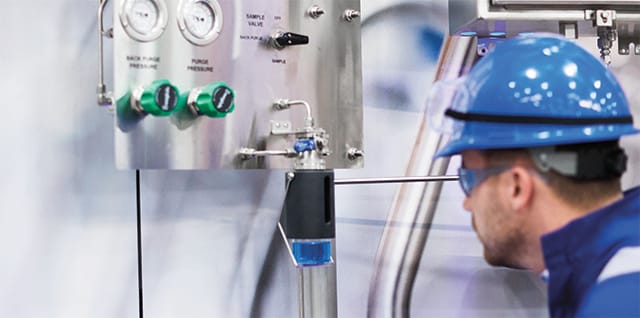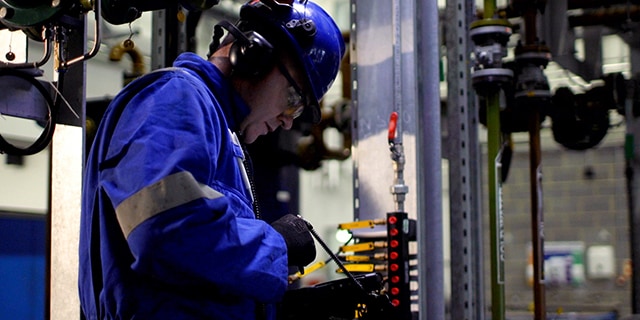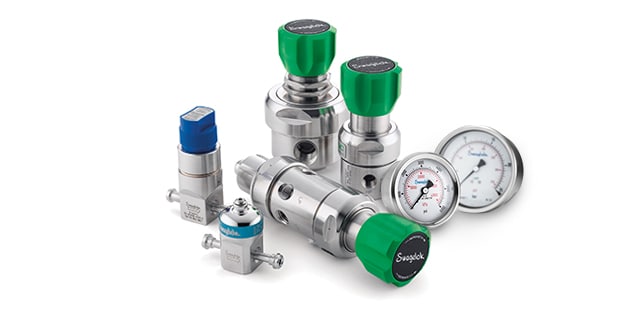Do’s and Don’ts for Sampling System Accuracy

Do’s and Don’ts for Sampling System Accuracy
Ken Backus, Field Engineer (North America)
Reliable process sample accuracy can be a challenge for even the most experienced fluid system engineers and analyzer technicians. Often, identifying the cause of inaccuracies can feel like something of a guessing game, and the more time an issue takes to diagnose, the longer your operation may be losing money on product that is not up to spec.
Want more accurate samples? Here is a quick list of do’s and don’ts for better sample accuracy in your plant:
Do check for simple system errors. Sometimes the reasons for process sampling inaccuracy are easy to identify. Regularly audit your sample system to eliminate simple mistakes—things like reversed check valves blocking your sample flow, or a fast loop flowing backwards.
Do maintain sample flow. Successful sampling depends on ensuring the process sample fluid remains at the right flow, pressure and temperature to bring the fluid into an appropriate condition for analysis. Controlling those three conditions might be enough to eliminate many of the problems plaguing process analyzers around the world. Generally, a faster flow is recommended to ensure good sample mixing, cleaner sample lines, and quicker response time.
Do identify sources of time delay. Time delay refers to the total amount of time it takes for a sample to travel from the tap in the main process line to the analyzer. Too long a delay can negatively influence sample accuracy. Symptoms of an issue can include measurements that do not appear to be tracking with your process, muted responses, laboratory disagreement, and poor control scheme performance.
There are a few areas that can influence time delay, including the length of the sample probe, the line length and diameter of sample transport lines, too high or too low pressure in those same lines, and beyond. Unsure where to start? Do take advantage of third-party resources to help you uncover potential time delay sources.
Do reduce gas volume upstream. Gasses may run through the main system at high pressures, and they can ruin a well-designed sampling system. Not only can they cause time delay, as noted above, rapid decompression in the event of a component failure can also pose a safety risk. Therefore, it is a best practice to reduce the pressure of gasses as soon as possible in order to minimize sample system volume on the upstream side of a regulator.
Don’t choose incompatible materials. Fluids leave molecules behind after they touch a surface, and if your process sample loses too many molecules due to adsorption, your sample can spoil. Engineers should take care to select the proper materials for filter elements, regulator diaphragms, tube walls, or gas cylinders that minimize adsorption to improve sample accuracy.
Additionally, materials that are mismatched to your sample fluid may cause failures like sample leakage or even a blockage within the sampling device. Be sure to use compatible elastomer seals to ensure an accurate sample analysis.
Don’t sample from stagnant lines. Sampling from an active and flowing process line is essential to obtain an accurate sample. Remember: The timeliness of your sample is also dependent on the time it takes the sample to flow from the process to the extraction point. The location of the sample point can be a critical aspect of a successful sampling system.
Don’t design dead legs into the sample transport line. “Dead legs,” or lines containing an unpurged volume, can negatively impact process sample accuracy. These lines allow molecules to be held up from earlier samples that can diffuse into your current sample, causing a slow analyzer response and the continuous contamination of your system.
Don’t allow excessive flow through vaporizing regulators. Vaporizers must be kept at a specific temperature for optimal operation, with a heating element typically used to help counteract the Joule-Thomson (JT) effect. While overheating can cause some sampling inaccuracies, a more common issue occurs when the vaporizer ices up due to excessive flow. A good general rule of thumb is to never allow more than 2 standard liters per minute of gas to flow through a vaporizer.
***
Want to learn more about how to optimize your sampling systems for greater accuracy every time? Contact your local Swagelok Service Center for available evaluation and advisory services today:
Related Articles

How to Fix Common Grab Sampling Deficiencies
There are several common fluid systems that successful plant operation depends on and outsourcing their fabrication can be highly beneficial if you are short on resources.

Swagelok Field Engineer Services: Improving Analytical Instrumentation
Worldwide, industrial facilities are feeling the pressure to increase profits despite the widening manufacturing skills gap. Swagelok field engineers can help remedy your fluid system challenges with training and expert evaluation services.

Back-Pressure Regulator Set-Up: Tips for Sampling System Engineers
Back-pressure regulators can effectively control upstream pressure within a sampling system process line—when set up correctly. Learn how to accurately design and build a process line with a back-pressure regulator.

